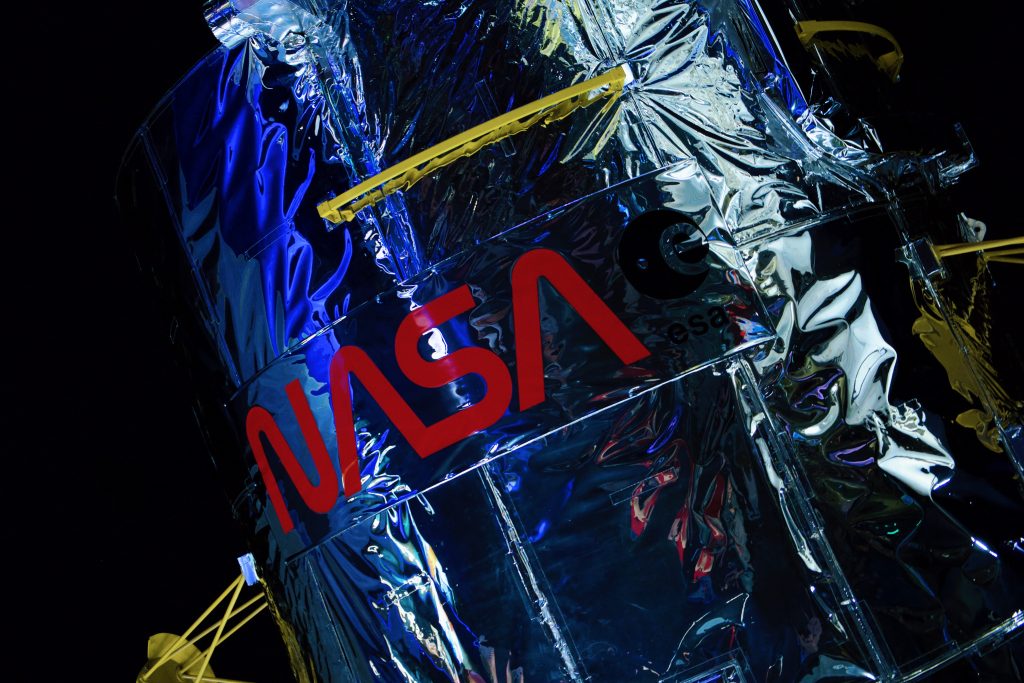So, you’re interested in observing the globular clusters in Centaurus using a telescope? That’s fantastic! Observing these clusters can provide you with a mesmerizing view of the stars and galaxies in our universe. To get started, you’ll need to make sure you have a telescope with a decent magnification power and good resolution.
Once you have your telescope ready, find a location with minimal light pollution to maximize your viewing experience. Aim your telescope towards Centaurus and look for the brightest globular clusters in the constellation. These clusters are typically dense groups of stars that form a spherical shape. Adjust the focus and magnification of your telescope until you can clearly observe the clusters’ individual stars. Take your time to explore different globular clusters in Centaurus, and enjoy the awe-inspiring beauty of our vast universe!
Choosing the Right Telescope
When it comes to observing the globular clusters in Centaurus, choosing the right telescope is crucial. There are various factors to consider, and doing proper research will help you make an informed decision. Start by researching the telescope options available on the market. Look for telescopes that are specifically designed for deep sky observations, as these will provide the best views of the globular clusters.
One important consideration is the aperture size of the telescope. The aperture determines how much light the telescope can gather, which directly impacts the clarity and brightness of your observations. For observing globular clusters, it is recommended to choose a telescope with a larger aperture size, as it allows for better resolution and the ability to see more detail.
Another factor to keep in mind is the focal length of the telescope. Opting for a long focal length will allow you to view the globular clusters with higher magnification, bringing out the intricate details of these celestial objects. A longer focal length also helps in minimizing aberrations, resulting in sharper and clearer views.
Lastly, evaluate the mount and stability of the telescope. It is important to choose a mount that can support your telescope’s weight and provide stable tracking. This will ensure that your observations are steady and free from vibrations, allowing you to capture the globular clusters in all their glory.
Preparing for Observation
Before you set out to observe the globular clusters in Centaurus, some preparation is necessary to ensure a smooth and successful experience. Start by gathering all the necessary equipment. In addition to the telescope, you might need a star chart or a sky map to navigate the night sky, a red flashlight for preserving night vision, and comfortable seating or a tripod for prolonged observations.
Check the weather conditions before heading out. Clear and dark skies are ideal for observing deep sky objects like globular clusters. Cloudy or hazy conditions may obstruct your view, so it’s best to plan your observation on nights with optimal weather.
Finding the perfect viewing location is crucial. Look for areas away from city lights and light pollution, as this can significantly affect the visibility of the globular clusters. Parks, rural areas, or even your own backyard, if it provides a clear view of the night sky, can be great options.
Before you start your observation, it is essential to clean and collimate your telescope. Dust and debris can hinder the clarity of your views, so make sure to remove any dirt from the lens or mirrors. Collimation, the alignment of the optical elements, ensures that your telescope performs at its best, providing crisp and focused images of the globular clusters.

Understanding Centaurus
To fully appreciate and observe the globular clusters in Centaurus, it helps to have some understanding of the constellation itself. Centaurus is one of the largest constellations in the southern hemisphere and is home to many fascinating celestial objects, including the globular clusters.
Explore the Centaurus constellation using star charts or planetarium software. Familiarize yourself with the prominent stars and their arrangement in the night sky. Understanding the constellation’s shape and position will help you navigate and locate the globular clusters more easily.
Identifying the globular clusters within Centaurus is crucial. These clusters are densely packed groups of stars that form a spherical or globular shape. Take the time to study the characteristics of each cluster, such as their size, brightness, and distance from Earth. This knowledge will enhance your observations and enable you to appreciate the unique qualities of each globular cluster.
Finding the Globular Clusters
Locating the globular clusters within Centaurus can be a challenge, but there are several techniques you can employ to assist you in finding them. One method is consulting star charts and sky maps. These resources provide detailed information on the location of celestial objects, including the globular clusters. By cross-referencing the charts with your observation area, you can accurately pinpoint the clusters’ position.
Another helpful tool is planetarium software. With these programs, you can simulate the night sky on your computer or mobile device, making it easier to identify and locate the globular clusters in Centaurus. These software applications often include search functions specifically designed for finding deep sky objects, making your observation planning more efficient.
One effective technique for locating the globular clusters is to use prominent stars as markers. Referencing star charts or planetarium software, identify bright stars near the clusters’ estimated location. By tracing a path from these stars, you can navigate your way to the clusters with greater precision.
Navigating with celestial coordinates is another method to find the globular clusters. Celestial coordinates, such as Right Ascension and Declination, act as a celestial equivalent of latitude and longitude on Earth. By inputting the coordinates of the clusters into your telescope’s computerized tracking system or manually adjusting the telescope’s position, you can accurately point towards the clusters.

Observation Techniques
Once your telescope is properly aligned and you’ve located the globular clusters, employing the right observation techniques will enhance your experience and give you the best possible views. Begin by choosing the right eyepiece. Consider the magnification and field of view you desire for observing the clusters. Experiment with different eyepieces to find the one that provides a balance between magnification and clarity.
Using filters can also enhance visibility when observing globular clusters. Filters, such as a nebula or light pollution filter, can enhance contrast and reduce the impact of light pollution, allowing you to see more detail in the clusters. Experiment with different filters to find the one that yields the best results for your specific observation conditions.
Employing the averted vision technique can also improve your ability to see fainter details within the clusters. Instead of directly focusing on the cluster, slightly shift your gaze to a nearby point, using your peripheral vision to detect the fainter stars and structures within the cluster. This technique takes advantage of the eye’s higher sensitivity to faint objects in the peripheral field.
Adapting to dark adaptation is essential when observing the globular clusters. Dark adaptation occurs when your eyes adjust to the darkness, increasing their sensitivity to low-light conditions. Minimize exposure to bright lights before and during the observation to allow your eyes to fully adapt, enabling you to see the fainter stars and finer details within the globular clusters.
Recording Observations
Recording your observations is not only a way to document your findings but also to deepen your understanding and contribute to scientific knowledge. When observing the globular clusters in Centaurus, consider sketching the clusters as you see them through the telescope. Sketching helps capture the overall shape and arrangement of the stars, providing a visual representation of your observations.
In addition to sketching, noting specific details and features of the clusters is essential. Take note of any variations in brightness, the presence of central cores, or hints of stellar colors. These details contribute to a comprehensive understanding of the clusters and can be shared with other astronomers and enthusiasts.
Recording the date, time, and weather information is also important. This allows you to track any changes or variations in the clusters’ appearance over time and compare observations with other astronomers. Weather information is particularly valuable as it helps identify if atmospheric conditions may have influenced your observations.
If you have the means, using astrophotography techniques can take your observation recordings to another level. Astrophotography allows you to capture detailed images of the globular clusters, enabling a closer examination of their structure and stellar population. Learning the basics of astrophotography will open up new possibilities for documenting and sharing your observations.

Understanding Cluster Properties
To gain a deeper understanding of the globular clusters in Centaurus, it is valuable to learn about their properties and characteristics. Begin by familiarizing yourself with the different types of globular clusters. Some clusters exhibit a more spherical shape, while others may have elongated or irregular shapes. Understanding these variations enhances your ability to identify and appreciate the unique qualities of each cluster.
The age and stellar population of the globular clusters are also important aspects to study. Some clusters are significantly older than others, with some dating back billions of years. The stellar population within each cluster can vary, with some clusters containing mostly older, low-mass stars and others having a mix of young and old stars.
Exploring the dynamics of the globular clusters allows you to understand how these systems evolve and interact over time. The gravitational interactions between stars within the clusters can lead to fascinating phenomena such as stellar collisions and the formation of binary star systems. By studying their dynamics, you can gain insights into the evolution and life cycle of these celestial objects.
Further Exploration and Research
If you are passionate about observing the globular clusters in Centaurus, there are many avenues for further exploration and research. Reading scientific papers and publications related to globular clusters and deep sky observations will provide you with a wealth of knowledge and new perspectives. Many astronomical societies and universities publish research papers that delve into the intricacies of these celestial objects.
Participating in online forums and communities dedicated to astronomy is another great way to expand your knowledge and engage with like-minded individuals. These communities often provide valuable insights and tips on observing techniques, equipment recommendations, and shared experiences.
Attending astronomy lectures and workshops can further enrich your understanding of globular clusters and other astronomical phenomena. Many observatories and universities offer public lectures and workshops that cover various topics in astronomy, including deep sky observations. These events not only provide in-depth information but also offer opportunities to network with experts in the field.
For those particularly interested in contributing to scientific research, engaging in collaborative research projects can be a rewarding experience. Many professional and amateur astronomers collaborate on research initiatives, sharing data and observations to contribute to our understanding of globular clusters and other celestial objects. By participating in these projects, you can actively contribute to scientific knowledge and be part of a passionate community of researchers.
Overcoming Challenges
Obtaining clear and detailed views of the globular clusters in Centaurus can sometimes be challenging due to various factors. Light pollution is a common obstacle in urban areas, as it diminishes the visibility of faint objects in the night sky. To overcome this, consider observing from darker locations, such as rural areas or parks away from city lights. Alternatively, use light pollution filters to reduce the impact of artificial lights.
Dew can also pose a challenge, especially in humid and cold conditions. Moisture can accumulate on the telescope’s optics, hindering the clarity of your views. Using a dew shield or a heater is an effective solution to prevent dew formation on the optics, ensuring your observations remain clear and undisturbed.
Atmospheric disturbances, such as air turbulence and high humidity, can affect the quality of your observations. These disturbances often manifest as blurred or shaky views. To mitigate their impact, try observing during periods of stable weather conditions and when the air is calm. Additionally, allow your telescope to cool down to the ambient temperature to minimize performance issues caused by thermal gradients.
Proper telescope alignment and tracking are also crucial to overcome challenges when observing the globular clusters. Calibration errors or inaccuracies in the mount’s tracking can lead to frustrating experiences and impact the quality of your observations. Regularly check and adjust the alignment of your telescope, ensuring it is accurately tracking celestial objects. Regular maintenance and alignment checks will ensure a smooth and uninterrupted observation experience.
Safety Considerations
Observing the globular clusters in Centaurus with a telescope requires taking safety considerations into account. When applicable, always use solar filters to protect your eyes when observing the Sun. Direct sun exposure without proper protection can cause severe eye damage. Invest in solar filters designed specifically for telescope use to enjoy safe observations of our nearest star.
Protecting your eyes from direct sun exposure is crucial even when observing at night. Avoid looking directly at the Sun or any other bright light sources, as this can cause harm to your eyesight. Always practice safe observation habits and avoid staring at bright objects for prolonged periods.
Choose observation locations that are safe and away from any potential hazards. Avoid setting up your equipment in areas with high foot traffic or where there is a risk of injury or theft. Ensuring your telescope and equipment are securely set up and protected from accidental falls or damage is another important safety consideration.
By following these safety guidelines, you can enjoy the experience of observing the globular clusters in Centaurus while prioritizing the well-being of yourself and those around you. Remember, astronomy is a hobby that should be enjoyed with both curiosity and caution.











